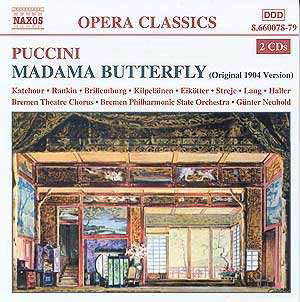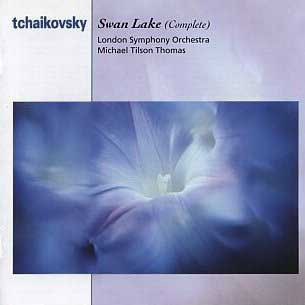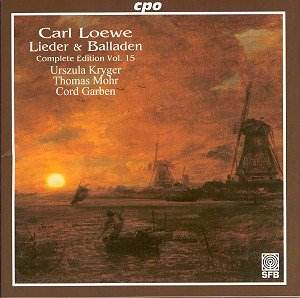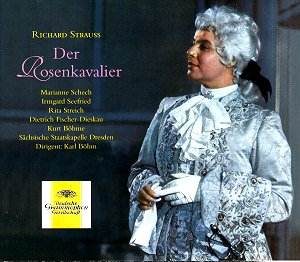 Composer: Giacomo Puccini
Composer: Giacomo Puccini
Works: Madama Butterfly (Original 1904 Version)
Performers: Butterfly (Cio-Cio-San) – Svetlana Katchour, F.B. Pinkerton – Bruce Rankin, Suzuki – Fredrika Brillemburg, Sharpless – Heikki Kilpeläinen, Goro – Uwe Eikotter, Kate Pinkerton – Kristen Strejc, Prince Yamadori – Loren Christopher Lang, Bonze – Andreas Haller, Bremen Theatre Chorus, Theo Wiedebusch, Chorus-Master, Bremen Philharmonic State Orchestra/Gunter Neuhold
Recording: Bremen Theatre, Stuhr, Germany, 15-19 December 1997
Label: NAXOS
Puccini’s “Madama Butterfly” remains one of the most poignant operatic tragedies, its narrative of love, betrayal, and cultural clash resonating deeply since its tumultuous premiere in 1904. Inspired by the one-act play by David Belasco, which itself drew from John Luther Long’s short story, Puccini’s opera traverses the delicate balance between East and West, encapsulating a world of heartbreak through exquisite musical language. This recording of the original two-act version, while historically significant, offers a unique lens through which to explore the opera’s thematic depth and Puccini’s evolving compositional style.
The performance, featuring Svetlana Katchour as Cio-Cio-San, captures the essence of Butterfly’s tragic innocence with a voice that possesses both a rich timbre and an impressive range. Katchour’s interpretation of “Un bel di” is particularly noteworthy; her soaring lines convey a sense of yearning that is palpable. The warmth of her voice evokes the character’s emotional landscape, and the phrase “Verrà” is rendered with a delicate balance of hope and fatalism. Bruce Rankin’s Pinkerton, while lacking some of the vocal charisma of other tenors in the role, brings a measured sincerity to the character, effectively embodying his complexity, even if his portrayal occasionally skims the surface of Pinkerton’s moral ambiguity. The chemistry between Katchour and Rankin in the dramatic duets is compelling, particularly in “Amore o grillo,” which showcases their ability to navigate the intricacies of emotional interplay.
The orchestral playing, under the direction of Gunter Neuhold, is generally robust, though it does suffer from an initial boxy sound quality that may distract from the overall experience. As the performance unfolds, however, the orchestra reveals its strengths, particularly in the Humming Chorus, where the textures are effectively layered, though the chorus itself is slightly off-pitch. The Bremen Philharmonic State Orchestra brings a vibrant color to the orchestration, with Puccini’s lush harmonies and intricate orchestral details emerging with clarity. The engineering, while mostly excellent, does leave some moments in the opening scene feeling less immersive than one might hope, lacking the atmospheric depth present in some rival recordings.
Comparatively, NAXOS’s previous recording of “Madama Butterfly” (8.660015-16) offers a richer theatrical ambience, which enhances the dramatic experience. While this current release is commendable for its clarity and the strong performances of the soloists, it cannot quite match the overall vibrancy of its predecessor. The booklet notes, unfortunately printed in Italian only, may alienate those unfamiliar with the language, creating an additional barrier to understanding the opera’s narrative nuances.
This recording serves as an accessible entry point into Puccini’s world, offering valuable insights into the original 1904 version of “Madama Butterfly.” While it may not rise to the level of definitive interpretations, it is a solid representation of the work, showcasing an engaging cast and a competent orchestral performance. For those seeking to explore the depths of Puccini’s operatic genius, this release stands as a worthy option, providing an opportunity to appreciate both the beauty and tragedy that define “Madama Butterfly.”



